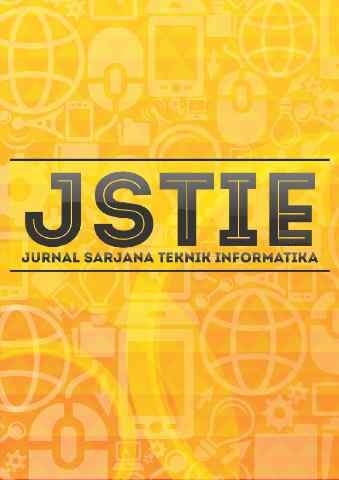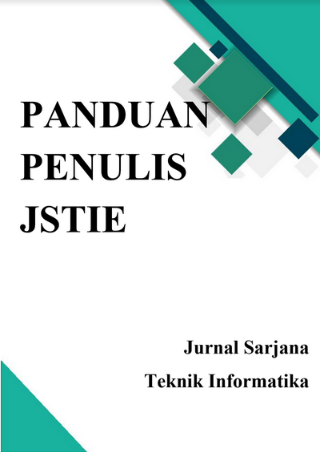Forensik Jaringan Terhadap Serangan DDOS Menggunakan Metode Network Forensic Development Life Cycle
DOI:
https://doi.org/10.12928/jstie.v11i3.26544Abstract
Teknologi informasi dan komunikasi merupakan elemen penting dalam kehidupan masa kini yang telah menjadi bagian bagi berbagai sektor kehidupan dan memberi andil besar terhadap perubahan yang mendasar. Sekelompok orang atau organisasi yang tidak bertanggung jawab dapat menggunakan internet untuk mengganggu atau merusak suatu website sehingga menyebabkan overload pada router dan membuat website tidak dapat diakses. Metode penyerangan ini disebut dengan DDoS (Distributed Denial of Service). Tujuan penelitian ini adalah mengidentifikasi keamanan jaringan pada router dan mendapatkan karakteristik barang bukti digital pada router untuk keperluan forensik. Penelitian ini menggunakan metode Network Forensic Development Life Cycle (NFDLC) yang memiliki pada lima tahapan utama yaitu Initiation, Acquisition, Implemetation, Operations, dan Disposation. Tools yang digunakan pada penelitian adalah menggunakan Wireshark yang bertugas monitoring serangan DDoS terhadap serangan router dan melakukan investigasi untuk mendapatkan barang bukti digital berupa hasil serangan yang masuk ke servertrak. Hasil temuan barang bukti digital yang didapat pada monitoring ubuntu server tercatat menerima 84.407 paket pada serangan pertama dengan IP Address 10.10.1.2 dan menerima 359.510 paket pada serangan kedua dengan Ip Address 10.10.1.4 dan hasil monitoring windows server tercatat menerima 2.305.835 paket pada serangan pertama dengan IP Address 10.10.1.2 dan menerima 94.120 paket pada serangan kedua dengan Ip Address 10.10.1.4.
References
I. Rusydi, “Peranan Perkembangan Teknologi Informasi dan Komunikasi dalam Kegiatan Pembelajaran dan Perkembangan Dunia Pendidikan,” War. Dharmawangsa, no. 53, pp. 1–14, 2017, doi: https://doi.org/10.46576/wdw.v0i53.272.
L. Y. Siregar and M. I. P. Nasution, “Perkembangan Teknologi Informasi Terhadap Peningkatan Bisnis Online,” J. Ilm. Manaj. dan Bisnis, vol. 2, no. 1, pp. 71–75, 2020, doi: https://doi.org/10.30606/hjimb.
R. Hermawan, “Analisis Konsep dan Cara Kerja Serangan Komputer Distributed Denial of Service (DDoS),” Fakt. Exacta, vol. 5, no. 1, pp. 1–14, 2015, doi: http://dx.doi.org/10.30998/faktorexacta.v5i1.186.
M. D. Erlangga and A. Prihanto, “Analisis Reliabilitas Multiserver Menggunakan Load Balancing dengan Metode Denial Of Service,” J. Informatics Comput. Sci., vol. 3, no. 03, pp. 258–266, Dec. 2021, doi: 10.26740/jinacs.v3n03.p258-266.
S. Sutarti and K. Khairunnisa, “Perancangan dan Analisis Keamanan Jaringan Nirkabel dari Serangan DSoS (Distributed Denial Of Service) Berbasis Honeypot,” J. Pengemb. Ris. dan Obs. Sist. Komput., vol. 4, no. 2, pp. 9–16, 2017.
S. Aji, A. Fadlil, and I. Riadi, “Pengembangan Sistem Pengaman Jaringan Komputer Berdasarkan Analisis Forensik Jaringan,” J. Ilm. Tek. Elektro Komput. dan Inform., vol. 3, no. 1, p. 11, Jun. 2017, doi: 10.26555/jiteki.v3i1.5665.
R. Inggi, B. Sugiantoro, and Y. Prayudi, “Penerapan System Development Life Cycle (SDLC) dalam Mengembangkan Framework Audio Forensik,” semanTIK, vol. 4, no. 2, pp. 193–200, 2018, doi: 10.5281/zenodo.2528444.
R. Ruuhwan, I. Riadi, and Y. Prayudi, “Analisis Kelayakan Integrated Digital Forensics Investigation Framework Untuk Investigasi Smartphone,” J. Buana Inform., vol. 7, no. 4, Oct. 2016, doi: 10.24002/jbi.v7i4.767.
A. R. Supriyono, B. Sugiantoro, and Y. Prayudi, “EKSPLORASI BUKTI DIGITAL PADA SMART ROUTER MENGGUNAKAN METODE LIVE FORENSICS,” Infotekmesin, vol. 10, no. 2, pp. 1–8, Jul. 2019, doi: 10.35970/infotekmesin.v10i2.48.
M. N. Faiz, W. A. Prabowo, and M. F. Sidiq, “Studi Komparasi Investigasi Digital Forensik pada Tindak Kriminal,” J. Informatics, Inf. Syst. Softw. Eng. Appl., vol. 1, no. 1, pp. 62–70, 2018, doi: 10.20895/INISTA.V1I1.
Downloads
Published
Issue
Section
License
License and Copyright Agreement
In submitting the manuscript to the journal, the authors certify that:
- They are authorized by their co-authors to enter into these arrangements.
- The work described has not been formally published before, except in the form of an abstract or as part of a published lecture, review, thesis, or overlay journal. Please also carefully read Journal Posting Your Article Policy.
- The work is not under consideration for publication elsewhere.
- The work has been approved by all the author(s) and by the responsible authorities – tacitly or explicitly – of the institutes where the work has been carried out.
- They secure the right to reproduce any material that has already been published or copyrighted elsewhere.
- They agree to the following license and copyright agreement.
Copyright
Authors who publish with Jurnal Sarjana Teknik Informatika agree to the following terms:
- Authors retain copyright and grant the journal right of first publication with the work simultaneously licensed under a Creative Commons Attribution License (CC BY-SA 4.0) that allows others to share the work with an acknowledgement of the work's authorship and initial publication in this journal.
- Authors are able to enter into separate, additional contractual arrangements for the non-exclusive distribution of the journal's published version of the work (e.g., post it to an institutional repository or publish it in a book), with an acknowledgement of its initial publication in this journal.
- Authors are permitted and encouraged to post their work online (e.g., in institutional repositories or on their website) prior to and during the submission process, as it can lead to productive exchanges, as well as earlier and greater citation of published work.








